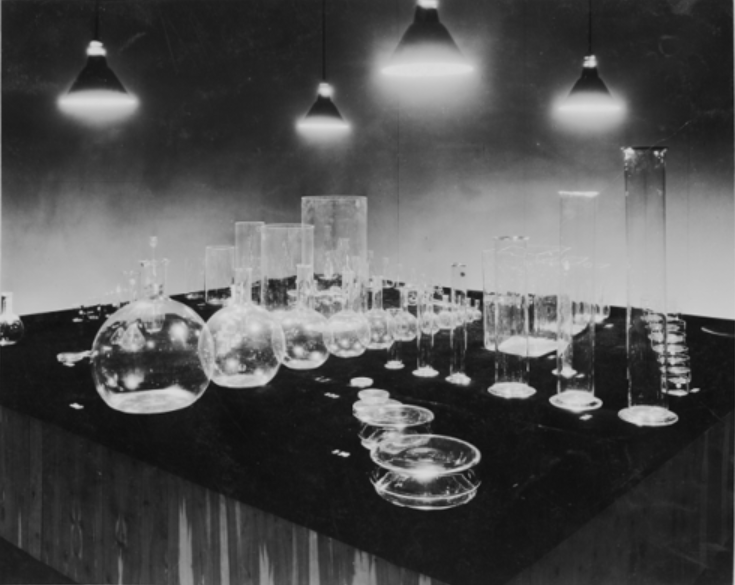Boiling Flasks,
designed by unknownAlfred Barr and Philip Johnson used chemical flasks similar to these because simple decanters without decoration were not commercially available. Johnson visited Bauhaus masters Josef and Anni Albers during the summer of 1933 in Berlin, where he observed this habit in their minimally furnished apartment. The next year, Johnson selected similar chemical flasks and other laboratory glassware for a display in the “Jewel Room” in his Machine Art exhibition at MoMA. Arranged on black velvet and lit from above, the rows of gleaming glass forms in order by size were praised by the press and the public.






